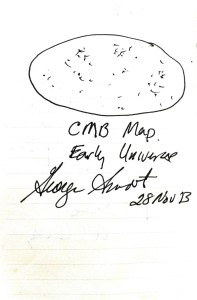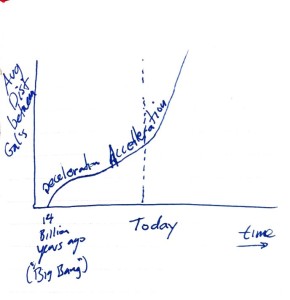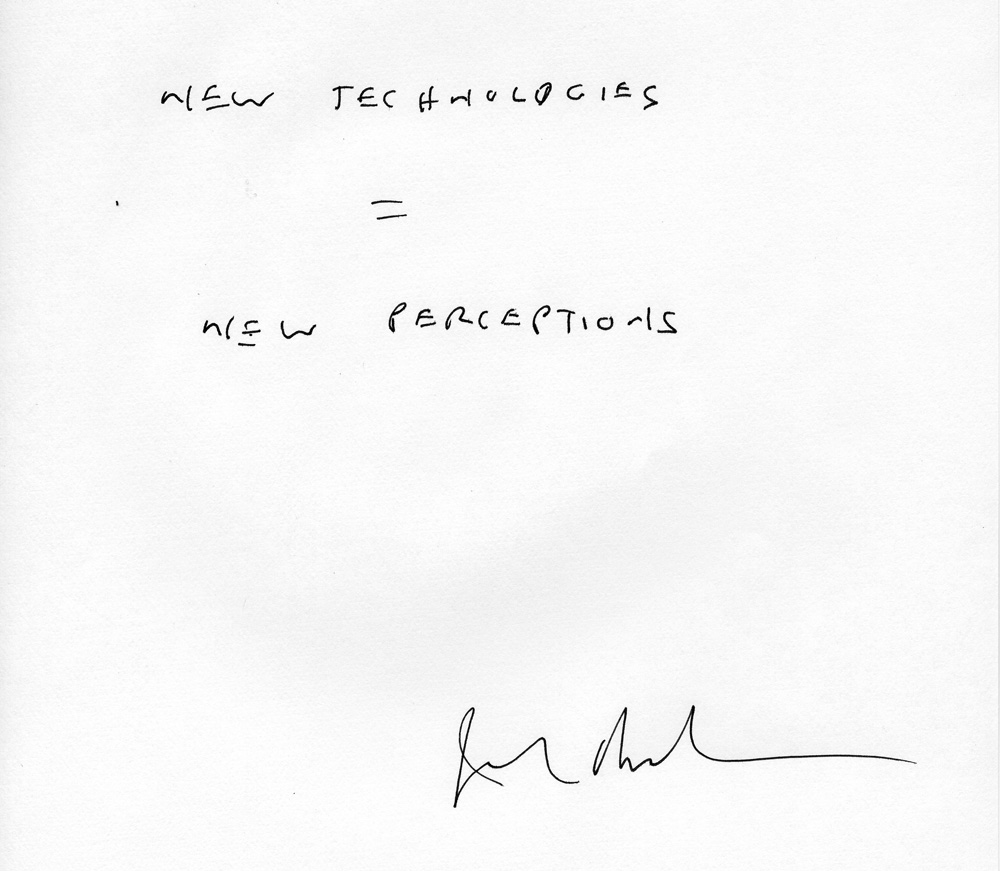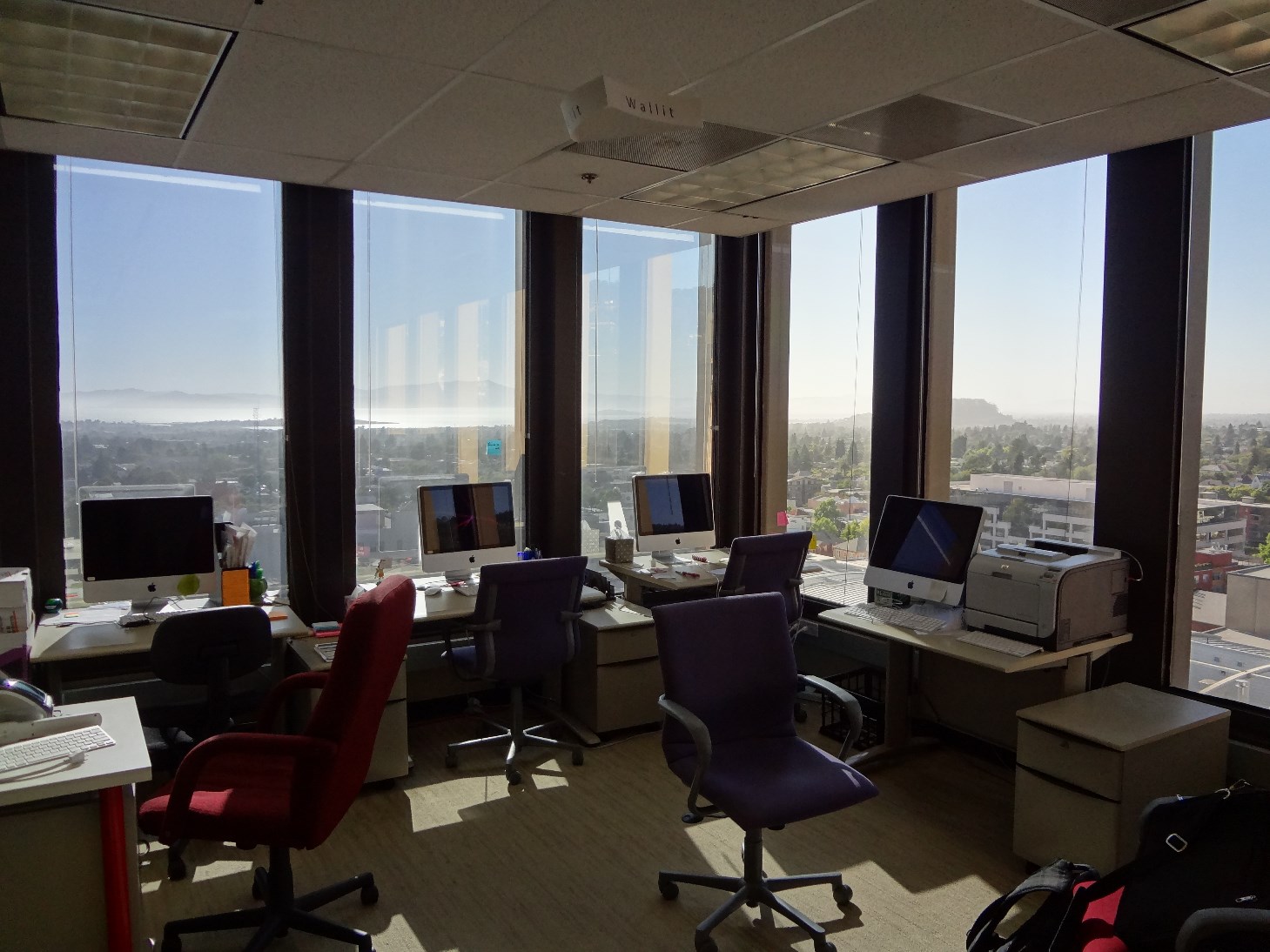I’ve been working at the Lawrence Berkeley National Lab for a year now, and I wanted to get drawings from the two Nobel prizes that are still active in the lab : George Smoot (N2006) and Saul Perlmutter (N2011).
They both proved very difficult to find, since they are often travelling. But today, the day before Thanksgiving, I was particularly in luck : I spotted these two guys at the cafeteria !The time I came back to my office to grab my notebook, Saul Perlmutter was gone, but George Smoot was still here !I asked him to draw me a picture of the Cosmic Microwave Background. Here’s the result :
However, Saul Perlmutter had left. But… I knew where his office was. I went there; we talked a little bit.
A little earlier on, my friend Josquin told me that I would rather ask him a picture of a Supernova, probably easier to draw that the idea of universe expansion. Saul told me that this picture wouldn’t be personal, since his mind has been infused by the commonly accepted picture, and proposed to draw me a chart of the accelerating universe :
There we go ! (You can check my collection of noble drawings here)
Last month, I had the occasion to attend Uncharted, advertised as the local SXSW, thanks to a scholarship. Continue reading






